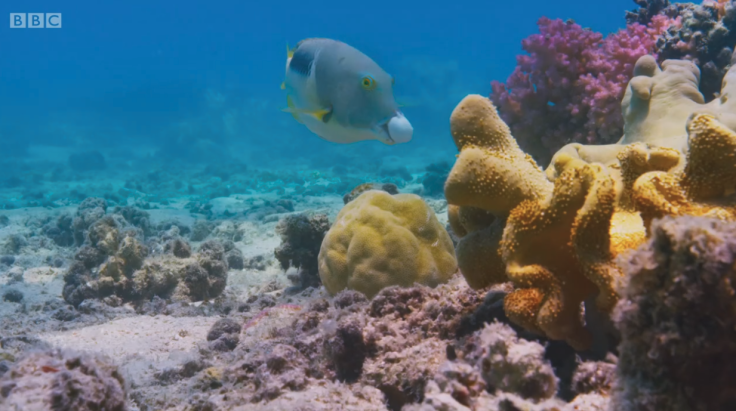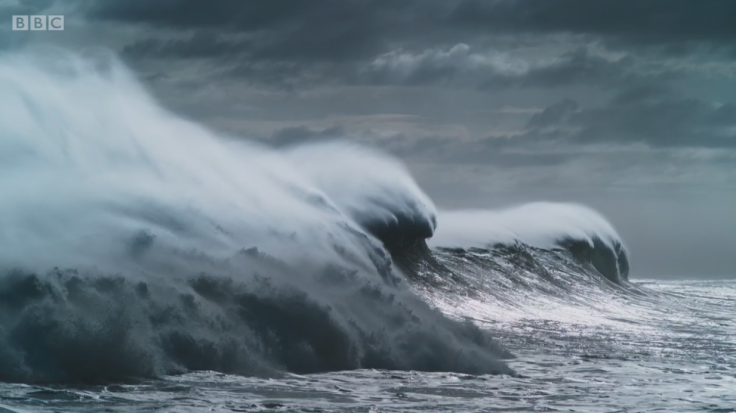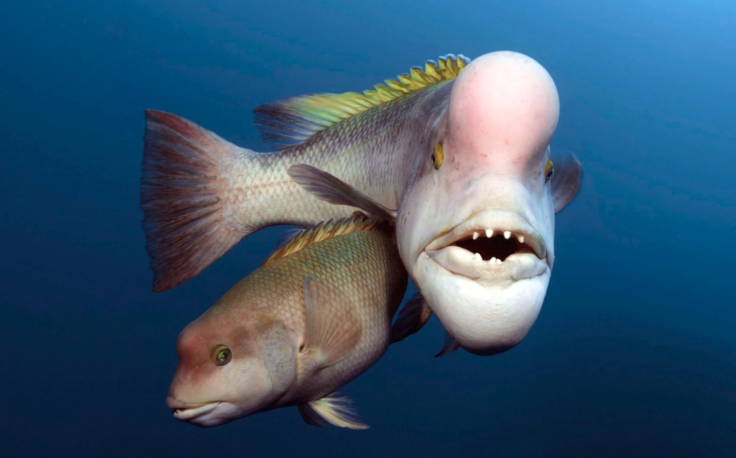Best moments from Blue Planet 2: Mobula rays, terrifying ocean swells and transgender fish
All the highlights from episode one: One Ocean

Nothing on television compares to a BBC nature documentary. The years of work that goes into every major series – from Frozen Planet to Planet Earth to, now, Blue Planet 2 – invariably results in must-see entertainment.
Last night Blue Planet returned after 16 years, and was every bit as good as its predecessor. Benefitting from leaps forward in technology and visual fidelity, Sir David Attenborough narrated another incredible hour of television.
Here are some of our favourite moments from episode one: One Ocean.
The tuskfish
Early on in the episode, after following a pod of dolphins, we visit a vast and densely populated coral reef and one of its many inhabitants: the tuskfish. This small creature, Attenborough explains, challenges "our understanding of fish intelligence."
The tuskfish gets its name from its few teeth, which it uses to clear dead coral and pick up clams found on the edge of the reef. Taking them back to a specific location, the fish uses its mouth to hold the clam and smash it against a protruding coral edge, using it as a tool.
Bird-eating fish
Next we met a giant trevally, a fish that can grow to around 1.7m in length and which leaps out of the ocean to catch and eat birds sitting on or gliding over the glimmering surface. They calculate the flight path and the trajectory needed to pluck the flying creatures from the air.
As Attenborough said earlier in the episode following the tuskfish, "Some fish are much cleverer than you might suppose."

Ocean swells
While obvious, the awe-inspiring cinematography of big budget documentaries like Blue Planet is often secondary to the stories being told and the unexpected wildlife brought to our screens.
Blue Planet's return included some stunning shots, chief among them was the sequence about enormous storms and the huge ocean swells they can generate. We saw monstrous waves form, crest and crash, displaying their terrifying raw power.
"In its lifetime, a large storm can release energy that is the equivalent of 10,000 nuclear bombs," Attenborough said.
Mobula ray feast
In a joyous sequence we saw an enormous beam of large mobula rays convene in the "seasonal seas" as they warm in the spring. The rays leap out of the water for unknown reasons, perhaps purely for the joy of it – like the dolphins earlier on in the episode.
We then see them feast on plankton stirred up from the deep, their food's faint glow captured by cameras for the first time, resulting in what could be the episode's most stunning sequence.

Transgender fish
The episodes most extraordinary story involved its most extraordinarily ugly stars. With their bulbous heads and large fish-chins male Asian sheepshead wrasses look like subaquatic Easter Island statues.
We see their mating ritual, but then something else only recently discovered. Female wrasses have the ability to become male, but only some do so. Scientists are still trying to figure out exactly why.
"Over just a few months particular enzymes inside her body cease to work, and male hormones start to circulate. As time passes her head expands and her chin gets longer. A 'she' has changed into a 'he'.
"And with this comes a change in temperament." Sounds about right.






















